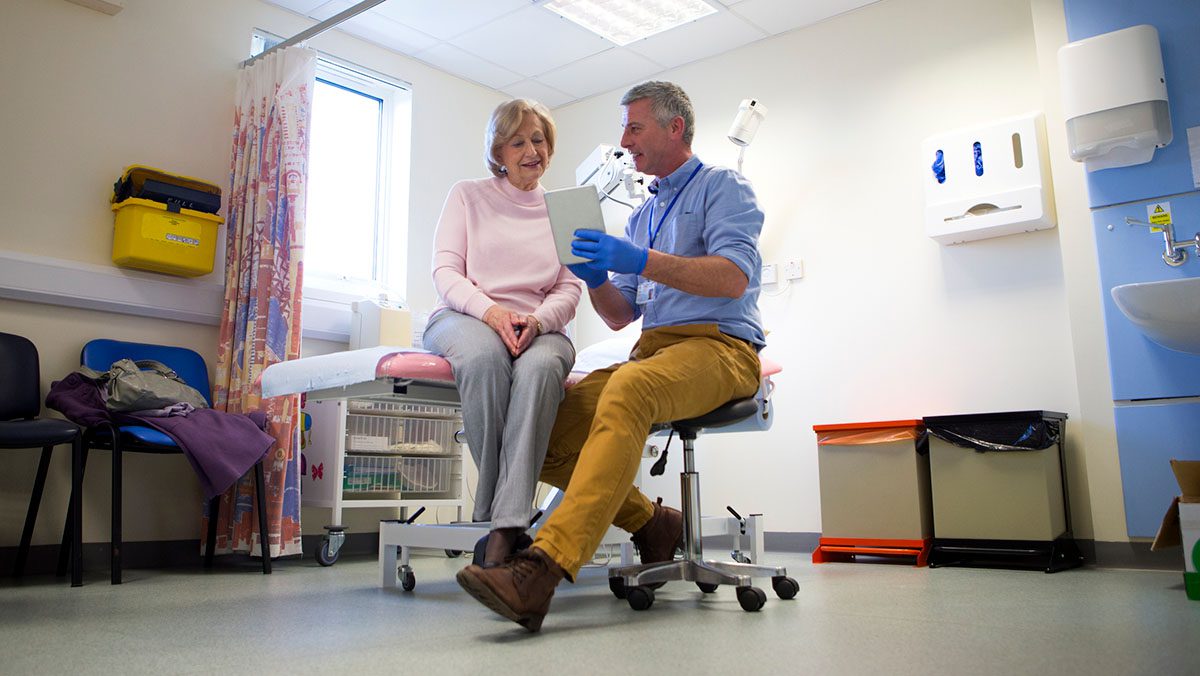In an NHS under sustained pressure to improve quality and increase productivity, the standard ‘bleep’ system is quietly conspiring to drive inefficiencies and affect patient care.
Too often, the system is — silently — at the root of delayed, inappropriate or mis-prioritised treatment, with negative outcomes for patients. Yet the problem continues to go unnoticed, unmeasured and unchallenged. If clinicians knew the size of the problem and how easy it is to fix, they would certainly push for change. But familiarity with the bleep system, and the widespread culture of acceptance, is holding back progress.
The tipping point is fast approaching: if hospitals are to improve patient safety, increase efficiencies and deliver better health outcomes, they must move away from a reliance on dated communications tools and bring secondary care into the 21st century. An effective solution is not only out there, it is simple to use, painless to implement and delivers immediate improvements. The benefits are significant. But the cost of failing to act is even greater. A wireless system of call handling and task management can not only save money, it can save lives.
Limited communications
A good communications system is the backbone of hospital activity and central to clinical task management. The optimal patient journey depends upon different clinical teams, spread across a large area, pulling together to deliver holistic, timely and appropriate services. Communication is key. But evidence indicates that the bleep pager, the most common mode of communication in hospitals, is having a detrimental impact on clinical care. It’s time to replace it with a new model.
Pager communication does little to support the needs of a hectic, fast-moving hospital environment. Nurses paging busy doctors have no idea whether their messages have been received — a signal blackspot can lead to a communication failure that senders have no means of identifying. Likewise, since devices have limited memory capacity, messages can quickly get squeezed out of the system and missed by clinicians.
In turn, clinicians responding to messages often struggle to achieve direct contact with the nurse that initially paged them. The likelihood of the ward nurse being busy at the time of a return call is high. The ensuing ‘telecomms tennis’ not only leads to increased delays in treatment, but it perpetuates a lack of ownership and accountability that creates uncertainty and affects patient outcomes.
Equally, the limited nature of paged communications means that messages lack crucial detail, giving clinicians no ability to prioritise tasks. When a bleep arrives — commonly interrupting other clinical activity — an HCP has no means of discerning whether a request is urgent or routine. On average, only 10% of bleeps are classified as urgent — but the clinician is powerless to make the distinction.
Resource management
The bleep system is also one-directional — forcing users to contact a specific individual. This individual may already be engaged on other time-consuming clinical activity and out of circulation. Meanwhile other clinicians who are able to respond immediately remain oblivious to the need. The bleep does not allow the full workforce to be leveraged. It provides no visibility to allow a hospital to direct its staff towards priorities, as there is no real-time information to establish what individuals are doing at any given time. This drives inefficiency, fails to maximise resources and delays patient care.
This inability to manage tasks in a timely and appropriate fashion is costly at every level. Sub-optimal patient care can lead to unnecessary increases in lengths of stay, placing greater pressure on resources and depriving others of hospital care. Likewise, patients are exposed to the risk of deterioration — with a delay in even routine interventions capable of having serious medical consequences. A delay in prescribing IV fluids, for example, can lead to a fall in Blood pressure leading into renal failure and an extended hospital stay.
Out of hours care
The problems are exacerbated in ‘out of hours’ care (OOH) when hospital resources are significantly depleted. On average, a hospital with 750 in-patients will deploy around 250 clinicians during core hours. But out of hours, whilst the volume of in-patients remains the same, the number of clinicians can drop to as low as five. OOH clinicians can typically expect to receive up to 150 bleeps during a standard shift — but with resourcing at a minimum, the current system’s inability to differentiate between critical and non-urgent activity makes effective task management an impossible exercise.
What’s more, it exposes acute patients to a potential treatment lottery. With 75% of annual hospital care classified as OOH, the challenge of maximising limited resources out of hours is ubiquitous across secondary care.
Clinical governance
Current methodology is open to the miscommunication of clinical requirements. This risk is particularly heightened during the crucial shift handover period, when task allocation and the communication of clinical information from one team to another can be prone to inaccuracy. Miscommunication can not only lead to inappropriate treatment, evidence shows it can also lead to patient fatalities.
Despite this, the bleep system lacks an audit log to document communication. When patient safety incidents arise, there is no way of evidencing the clinical discussions that took place. Hospitals must do more to ensure that clinicians have the right tools to support their work. The bleep lacks accountability and governance and carries no relevant patient information to help staff prioritise and make informed decisions. This inevitably leads to increased incidents and failure to rescue patients.
Whilst the bleep system is rarely — if ever — identified as the fundamental source of a patient safety incident, evidence indicates that communication errors are a factor in most incident reports. It is therefore increasingly clear that a more effective communications system can make a significant contribution to helping hospitals deliver safer, more effective and efficient care. And if a simple change can yield dramatic improvements, why accept inferior tools?
The solution
The cost of maintaining an archaic communications system is significant. Delays to treatment — or indeed to hospital discharge — not only lead to extended bed stays at increased expense, but they also carry the risk of patient deterioration and, in some cases, death. But the communications problem silently plaguing NHS hospitals can be fixed quickly, painlessly and effectively.
In some parts of the UK, proactive trusts have implemented a wireless system of task management that has helped empower co-ordinated teams to manage clinical resources optimally. Leveraging clinical workflow management software and mobile technology over a medical-grade wireless network is already proving to be effective in improving efficiency and patient safety.
Under this simple model, patient-directed tasks from ward nurses are directed through a coordinator who provides a triage function to allocate clinical tasks. These hospitals have quickly seen significant improvements in efficiency and information flow — leading to a reduction in untoward incidents, length of stay and peri-arrest calls. One hospital reported a 70% reduction in clinical incidents since the system was implemented.
Bleeping out the bleeps
NHS trusts can no longer afford to be stymied by a communications system that was built for a different age. If hospitals are to improve outcomes and meet QIPP targets, clinicians must change the embedded culture where outdated communications tools are routinely accepted.
Technology is letting healthcare, and patients, down. But the problem can be easily fixed. We’re reaching the end of the page. It’s time to get rid of the bleeps.
Paul Volkaerts is Managing Director at Nervecentre Software





